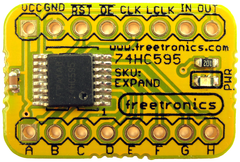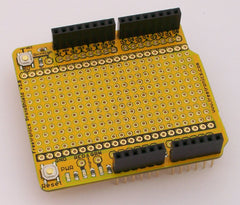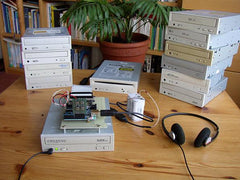Nachimir in the UK has found a way to use empty plastic milk bottles in an artistic and aesthetic manner - by converting them into individual lamps that can be addressed individually by an Ardiuno-style board. This allows the freedom to create all sorts of on/off controls, flowing lights or other patterns that can be imagined. Here is a short demonstration of them in action:
The number of lamps that could be controlled will depend on the number of free I/O pins available on the particular Arduino board. One can always use shift registers to expand the available output pins, or consider using an Arduino Mega-compatible board such as our Freetronics EtherMega:

... which gives you 54 digital output pins, and using the onboard Ethernet you could also have the lamps respond to content collated from the Internet. Or if you are using a smaller style of board, our EXPAND modules:

can be daisy-chained to provide more digital outputs. However, for more information on how to make your own lamps, read Nachimir's excellent instructions and design notes in his page.




















